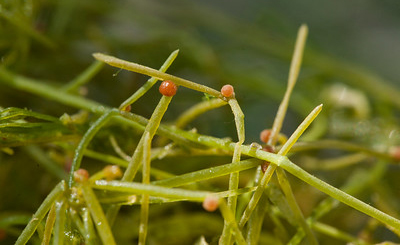Aquatic macrophytes are often limited by water clarity, particularly in impaired lakes, and improvements in water quality via reductions in external and internal loading often result in expansion of submersed macrophytes. In many instances, however, invasive aquatic plants are present and increase at the expense of native plants. Invasive macrophytes usually can persist in poorer water clarity conditions than native plants and although there are a variety of methods to effectively control invasives, restoring native plant communities is difficult without further water quality enhancements. Thus management agencies attempting to meet water quality standards and nutrient, clarity and biological criteria, have a difficult time balancing water quality improvements with invasive plant impacts.
We will use a combination of field assessments of water quality and aquatic plants in managed lakes, within-lake water quality modeling and an across basin water quality and management response to assess best practices to enhance native macrophyte communities while improving water quality to meet water quality standards. We will assess current practices used by western Wisconsin and Twin Cities Metro Watershed Districts and agencies to determine which practices appear to be most effective and cost effective.
Our results will inform our basic understanding of the interlinkage of water quality and native and invasive macrophytes and provide recommendations for effective and attainable actions that can be used to address water quality and invasive plant management across the Upper Mississippi Basin.
